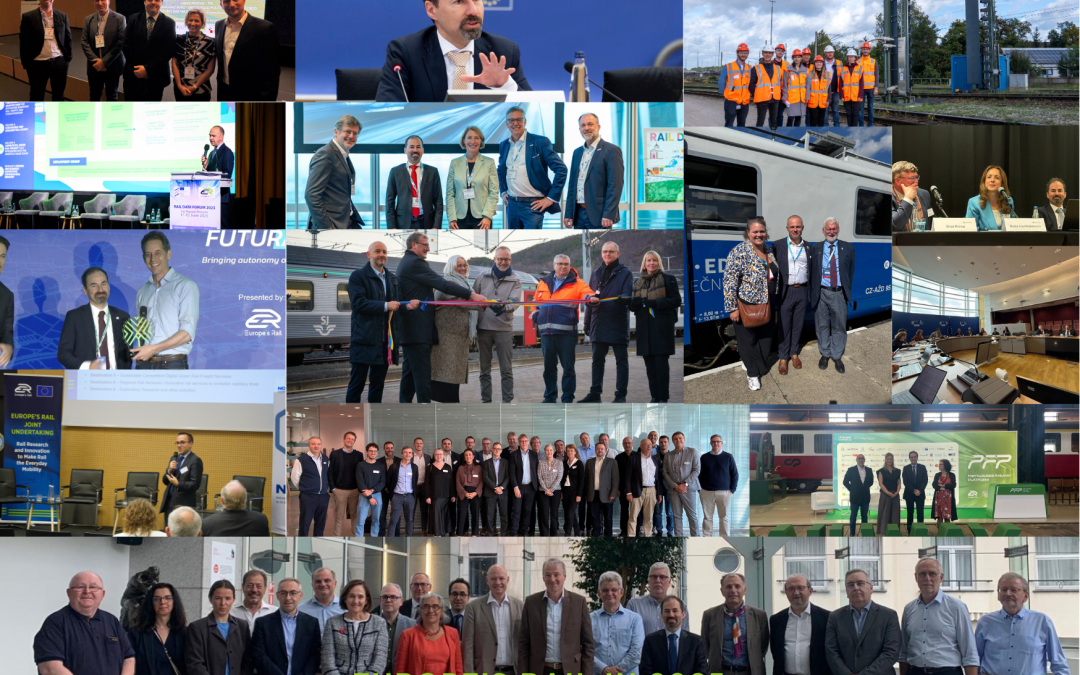2025 saw Europe’s Rail (EU-Rail) make significant progress across multiple initiatives, fostering partnerships and...

D13.1 Use case specification and requirement specification for disruption management
This report provides an analysis and detailed description of use cases relevant to solutions developed by the project to address disruptions due to railway infrastructure. These use cases address the design of Human Machine Interface (HMI) and development of Decision Support System (DSS) for disruption management using information from the Infrastructure Asset management System (IAMS) to support the Traffic Management System (TMS). The use cases analysis provided in this report cover all aspects relevant to involved actors, pre-conditions and post-conditions, implementation steps, relevant data exchange and requirements to be validated in the upcoming demonstrations within the scope of improved resilience and efficiency in disruption.
How it brings us closer to achieving better rail for Europe: FP1-Motional explores solutions for the European Traffic Management System (TMS) and Capacity Management System (CMS), for the multi-modal rail integration and Digital Enablers across all Flagship Areas that are paving the way towards the Single European Railway Area (SERA). This deliverable contributes to this ambition by providing the details and analysis required to support the upcoming rail disruptions solutions demonstrations within FP1-MOTIONAL.
Target audience: European Railway stakeholders
More information on this topic: FLAGSHIP PROJECT 1: MOTIONAL
D22.7 Assessment of the need for an early EGNOS service
This document presents the railway sector’s need for an early implementation of EGNOS (European Geostationary Navigation Overlay Service) to support Safety of Life (SoL) applications in the context of ASTP. EGNOS is expected to play a key role in enabling GNSS-based solutions within a multi-sensor approach. The document also proposes a migration strategy to take advantage of the potential early availability of an EGNOS SoL service for rail. It provides a detailed overview of the anticipated benefits such as cost-effectiveness, efficiency, improved performance, regular operations and reduced trackside assets – as well as the challenges, including delta certifications and possible upgrades when gradually moving to future services (especially if higher performance is required) linked to the implementation of this service in rail SoL applications.
How it brings us closer to achieving better rail for Europe: The FP2-D2DATO projects aims to enhance the capacity of the existing rail networks to match the increasing demand for transportation of both passengers and freight. To achieve this objective, this flagship project will take the advantages of digitisation and automation. More specifically, this deliverable discusses the implementation of satellite-based solutions in Europe that could help to reduce trackside and operational costs associated with ERTMS by increasing the track capabilities.
Target audience: Rail stakeholders, Member States, Policy Makers, National Safety Authorities, Notified Bodies
More information on this topic: FLAGSHIP PROJECT 2: R2DATO
D5.3: Public summary with the strategy to measure and process data for Bogie & Drive components
This document summarises the asset management R&I activities related to Bogie and Drive components, with a focus on data acquisition and monitoring technologies. The work aims to align, develop and to some extent test different strategies and technologies for collecting and transferring data using on-board technology for rolling stock. The objective is to provide new data sources for subsystems like bogies, traction, HVAC (Heating, Ventilation & Air Conditioning) and doors, enabling more advanced condition monitoring. The methodology involves joint analysis between operators, car-builders and component manufacturers to identify pain points and use cases. It also includes different bench tests to evaluate sensors and transmission technology. Although most use cases are carried out as proof of concept on a limited scale, the results are intended to generate results applicable for a wider market. It addresses challenges such as harsh environmental demands, complex data integration, high costs, and regulatory requirements. The outcomes will support the next activities in advancing analytics, maintenance strategies, and overall fleet efficiency.
How it brings us closer to achieving better rail for Europe: The Public summary with the strategy to measure and process data for Bogie & Drive components brings us closer to achieving better rail for Europe by enabling the development of more advanced data analytics. This helps operators and maintainers of the fleets to make more informed decisions, reduce costs and improve the reliability of the systems. Implementing Condition Monitoring (CM), Condition based Maintenance (CBM) and predictive maintenance addresses challenges such as harsh environmental demands, complex data integration, high costs and regulatory requirements. It intends to generate results applicable for a wider market and will support improved analytics and algorithms in the next steps of the project which aims to improve efficiency and reliability of railway fleets.
Target audience: Rail stakeholders, Train suppliers, operators, maintenance.
More information on this topic: FLAGSHIP PROJECT 3: IAM4RAIL
On-Board Equipment-Rolling Stocks prepared to DAC
This is a working document that outlines the interface requirements for wagons with Digital Automatic Coupling (DAC) hardware, addressing the need for clearer guidance from rolling stock builders. While wagon requirements are well established within the UIC normative framework, locomotive interfaces vary too widely to define a single standard. The specification for wagons follows UIC 530-1, requiring compatibility with centre buffer couplers. The information is compiled from FP5-TRANS4M-R deliverables and CEN NWIP WI 00256 A 0 K. As hardware developments mature, the document will be iterated accordingly. Although not a formal deliverable, the document serves as input for future regulatory and standardisation work involving ERA and CEN.
More information on this topic: Flagship Project 5: TRANS4M-R